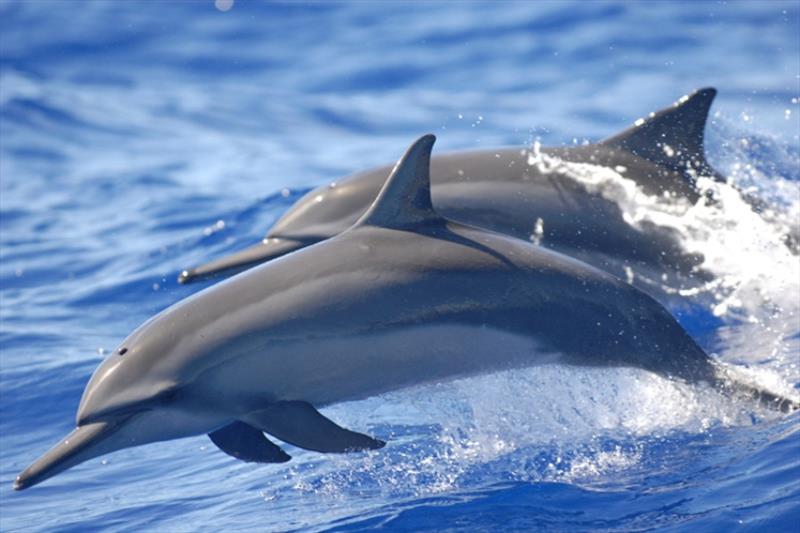
Six reasons why you should not swim with wild spinner dolphins
by NOAA Fisheries 10 Oct 2018 11:09 BST

Wild spinner dolphins © NOAA Fisheries
1. Swimmers and boats that come to visit wild spinner dolphins close to shore during the day could be disturbing their rest and potentially harming them.
Wild spinner dolphins feed off-shore at night and return to sheltered bays and coastlines during the day to rest, socialize, tend to their young, and avoid predators. Any energy used towards responding to human activity -- even if they appear to just be curious and enjoy the interaction -- is energy not being used for these behaviors that are critical for survival. When their rest is interrupted, especially if it happens many times in a day, it can affect their health and well-being.
2. Swimming with resting spinner dolphins may constitute "harassment" under the Marine Mammal Protection Act. Any act of pursuit, torment, or annoyance that has the potential to disrupt a marine mammal's behavior is "harassment" under this Act and is, therefore, against the law.
3. Human interactions with wild spinner dolphins may affect their behavior and the reproductive success of the dolphins.
4. Although spinner dolphins may not appear to be sleeping when you see them in near-shore waters, they often are. Spinner dolphins have to move and breathe while resting and therefore swim slowly and occasionally surface for air while allowing half their brain to sleep at a time. It is important to stay back and give them enough space (at least 50 yards/45 meters) and not swim with them so that they can get enough sleep to survive.
5. If spinner dolphins are regularly disturbed while in their nearshore resting habitat, they may be forced to move to a another location that's less protected, putting themselves at risk from predators like sharks. They may also be forced to use more energy to reach this location — energy that would otherwise be used to breed, nurse, and take care of their young. Hawaiian spinner dolphins choose certain sheltered, sandy bottom areas to rest because they are close to their feeding sites and the white sand background makes it easier for them to see predators.
6. Wild dolphins must maintain natural behaviors to thrive in the wild. The wild dolphins you encounter are not trained dolphins in an aquarium. Although dolphins are naturally curious, their curiosity should not be misinterpreted as "friendly" behavior. If a dolphin approaches you in the water, do not engage, follow, or otherwise interact with the animal. Allow it to pass by undisturbed and maintain its natural behaviors.